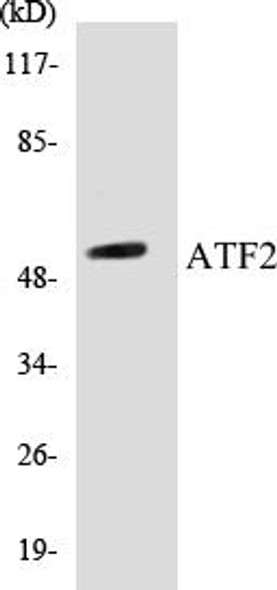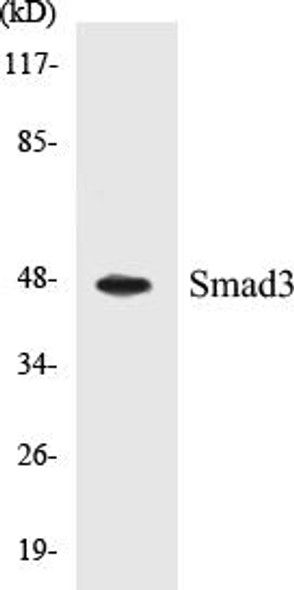Cell Cycle ELISA Kits
MKP1 Colorimetric Cell-Based ELISA Kit
- SKU:
- CBCAB00760
- Product Type:
- ELISA Kit
- ELISA Type:
- Cell Based
- Research Area:
- Cell Cycle
- Reactivity:
- Human
- Detection Method:
- Colorimetric
Description
| Product Name: | MKP1 Colorimetric Cell-Based ELISA |
| Product Code: | CBCAB00760 |
| ELISA Type: | Cell-Based |
| Target: | MKP1 |
| Reactivity: | Human |
| Dynamic Range: | > 5000 Cells |
| Detection Method: | Colorimetric 450 nmStorage/Stability:4°C/6 Months |
| Format: | 96-Well Microplate |
The MKP1 Colorimetric Cell-Based ELISA Kit is a convenient, lysate-free, high throughput and sensitive assay kit that can detect MKP1 protein expression profile in cells. The kit can be used for measuring the relative amounts of MKP1 in cultured cells as well as screening for the effects that various treatments, inhibitors (ie siRNA or chemicals), or activators have on MKP1.
Qualitative determination of MKP1 concentration is achieved by an indirect ELISA format. In essence, MKP1 is captured by MKP1-specific primary antibodies while the HRP-conjugated secondary antibodies bind the Fc region of the primary antibody. Through this binding, the HRP enzyme conjugated to the secondary antibody can catalyze a colorimetric reaction upon substrate addition. Due to the qualitative nature of the Cell-Based ELISA, multiple normalization methods are needed:
| 1. | A monoclonal antibody specific for human GAPDH is included to serve as an internal positive control in normalizing the target absorbance values. |
| 2. | Following the colorimetric measurement of HRP activity via substrate addition, the Crystal Violet whole-cell staining method may be used to determine cell density. After staining, the results can be analysed by normalizing the absorbance values to cell amounts, by which the plating difference can be adjusted. |
| Database Information: | Gene ID: 1843, UniProt ID: P28562, OMIM: 600714, Unigene: Hs.171695 |
| Gene Symbol: | DUS1 |
| Sub Type: | None |
| UniProt Protein Function: | MKP-1: a non-receptor, dual-specificity phosphoprotein phosphatase (DUSP). Different members of the DUSP family show distinct substrate specificities for MAPKs, different tissue distribution and subcellular localization, and different modes of inducibility of their expression by extracellular stimuli. DUSP1 specifically inactivates mitogen-activated protein (MAP) kinase in vitro by the concomitant dephosphorylation. It is induced in human skin fibroblasts by oxidative/heat stress and growth factors. Contains 1 rhodanese domain. |
| UniProt Protein Details: | Protein type:Protein phosphatase, dual-specificity; EC 3.1.3.48; Motility/polarity/chemotaxis; EC 3.1.3.16 Chromosomal Location of Human Ortholog: 5q34 Cellular Component: cytoplasm; nucleus Molecular Function:protein tyrosine/threonine phosphatase activity; protein binding; non-membrane spanning protein tyrosine phosphatase activity; protein tyrosine/serine/threonine phosphatase activity; MAP kinase tyrosine/serine/threonine phosphatase activity Biological Process: negative regulation of MAP kinase activity; response to light stimulus; response to retinoic acid; response to cAMP; negative regulation of MAPKKK cascade; positive regulation of apoptosis; response to glucocorticoid stimulus; negative regulation of meiotic cell cycle; response to testosterone stimulus; protein amino acid dephosphorylation; response to estradiol stimulus; cellular response to hormone stimulus; regulation of apoptosis; response to hydrogen peroxide; endoderm formation; response to oxidative stress; response to calcium ion; negative regulation of apoptosis; inactivation of MAPK activity |
| NCBI Summary: | The expression of DUSP1 gene is induced in human skin fibroblasts by oxidative/heat stress and growth factors. It specifies a protein with structural features similar to members of the non-receptor-type protein-tyrosine phosphatase family, and which has significant amino-acid sequence similarity to a Tyr/Ser-protein phosphatase encoded by the late gene H1 of vaccinia virus. The bacterially expressed and purified DUSP1 protein has intrinsic phosphatase activity, and specifically inactivates mitogen-activated protein (MAP) kinase in vitro by the concomitant dephosphorylation of both its phosphothreonine and phosphotyrosine residues. Furthermore, it suppresses the activation of MAP kinase by oncogenic ras in extracts of Xenopus oocytes. Thus, DUSP1 may play an important role in the human cellular response to environmental stress as well as in the negative regulation of cellular proliferation. [provided by RefSeq, Jul 2008] |
| UniProt Code: | P28562 |
| NCBI GenInfo Identifier: | 1346900 |
| NCBI Gene ID: | 1843 |
| NCBI Accession: | P28562.3 |
| UniProt Secondary Accession: | P28562,Q2V508, D3DQL9, |
| UniProt Related Accession: | P28562 |
| Molecular Weight: | 367 |
| NCBI Full Name: | Dual specificity protein phosphatase 1 |
| NCBI Synonym Full Names: | dual specificity phosphatase 1 |
| NCBI Official Symbol: | DUSP1 |
| NCBI Official Synonym Symbols: | HVH1; MKP1; CL100; MKP-1; PTPN10 |
| NCBI Protein Information: | dual specificity protein phosphatase 1; MAP kinase phosphatase 1; protein-tyrosine phosphatase CL100; dual specificity protein phosphatase hVH1; serine/threonine specific protein phosphatase; mitogen-activated protein kinase phosphatase 1 |
| UniProt Protein Name: | Dual specificity protein phosphatase 1 |
| UniProt Synonym Protein Names: | Dual specificity protein phosphatase hVH1; Mitogen-activated protein kinase phosphatase 1; MAP kinase phosphatase 1; MKP-1; Protein-tyrosine phosphatase CL100 |
| Protein Family: | Dual specificity protein phosphatase |
| UniProt Gene Name: | DUSP1 |
| UniProt Entry Name: | DUS1_HUMAN |
| Component | Quantity |
| 96-Well Cell Culture Clear-Bottom Microplate | 2 plates |
| 10X TBS | 24 mL |
| Quenching Buffer | 24 mL |
| Blocking Buffer | 50 mL |
| 15X Wash Buffer | 50 mL |
| Primary Antibody Diluent | 12 mL |
| 100x Anti-Phospho Target Antibody | 60 µL |
| 100x Anti-Target Antibody | 60 µL |
| Anti-GAPDH Antibody | 60 µL |
| HRP-Conjugated Anti-Rabbit IgG Antibody | 12 mL |
| HRP-Conjugated Anti-Mouse IgG Antibody | 12 mL |
| SDS Solution | 12 mL |
| Stop Solution | 24 mL |
| Ready-to-Use Substrate | 12 mL |
| Crystal Violet Solution | 12 mL |
| Adhesive Plate Seals | 2 seals |
The following materials and/or equipment are NOT provided in this kit but are necessary to successfully conduct the experiment:
- Microplate reader able to measure absorbance at 450 nm and/or 595 nm for Crystal Violet Cell Staining (Optional)
- Micropipettes with capability of measuring volumes ranging from 1 µL to 1 ml
- 37% formaldehyde (Sigma Cat# F-8775) or formaldehyde from other sources
- Squirt bottle, manifold dispenser, multichannel pipette reservoir or automated microplate washer
- Graph paper or computer software capable of generating or displaying logarithmic functions
- Absorbent papers or vacuum aspirator
- Test tubes or microfuge tubes capable of storing ≥1 ml
- Poly-L-Lysine (Sigma Cat# P4832 for suspension cells)
- Orbital shaker (optional)
- Deionized or sterile water
*Note: Protocols are specific to each batch/lot. For the correct instructions please follow the protocol included in your kit.
| Step | Procedure |
| 1. | Seed 200 µL of 20,000 adherent cells in culture medium in each well of a 96-well plate. The plates included in the kit are sterile and treated for cell culture. For suspension cells and loosely attached cells, coat the plates with 100 µL of 10 µg/ml Poly-L-Lysine (not included) to each well of a 96-well plate for 30 minutes at 37°C prior to adding cells. |
| 2. | Incubate the cells for overnight at 37°C, 5% CO2. |
| 3. | Treat the cells as desired. |
| 4. | Remove the cell culture medium and rinse with 200 µL of 1x TBS, twice. |
| 5. | Fix the cells by incubating with 100 µL of Fixing Solution for 20 minutes at room temperature. The 4% formaldehyde is used for adherent cells and 8% formaldehyde is used for suspension cells and loosely attached cells. |
| 6. | Remove the Fixing Solution and wash the plate 3 times with 200 µL 1x Wash Buffer for five minutes each time with gentle shaking on the orbital shaker. The plate can be stored at 4°C for a week. |
| 7. | Add 100 µL of Quenching Buffer and incubate for 20 minutes at room temperature. |
| 8. | Wash the plate 3 times with 1x Wash Buffer for 5 minutes each time. |
| 9. | Add 200 µL of Blocking Buffer and incubate for 1 hour at room temperature. |
| 10. | Wash 3 times with 200 µL of 1x Wash Buffer for 5 minutes each time. |
| 11. | Add 50 µL of 1x primary antibodies (Anti-MKP1 Antibody and/or Anti-GAPDH Antibody) to the corresponding wells, cover with Parafilm and incubate for 16 hours (overnight) at 4°C. If the target expression is known to be high, incubate for 2 hours at room temperature. |
| 12. | Wash 3 times with 200 µL of 1x Wash Buffer for 5 minutes each time. |
| 13. | Add 50 µL of 1x secondary antibodies (HRP-Conjugated AntiRabbit IgG Antibody or HRP-Conjugated Anti-Mouse IgG Antibody) to corresponding wells and incubate for 1.5 hours at room temperature. |
| 14. | Wash 3 times with 200 µL of 1x Wash Buffer for 5 minutes each time. |
| 15. | Add 50 µL of Ready-to-Use Substrate to each well and incubate for 30 minutes at room temperature in the dark. |
| 16. | Add 50 µL of Stop Solution to each well and read OD at 450 nm immediately using the microplate reader. |
(Additional Crystal Violet staining may be performed if desired – details of this may be found in the kit technical manual.)






